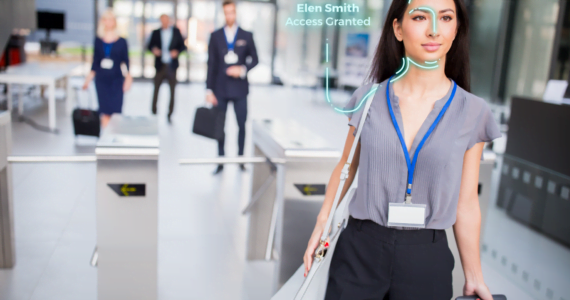
Watch How SmartFace Puts Seamless in Access Control
No access cards. No buttons or fingerprint readers. No waiting at turnstiles. Facial recognition technology has timely matured ...
Read moreThe world is experiencing a technological shift with every global citizen’s demand for their respective governments to provide the most convenient and safest means to access public services. Advancements in biometrics have transformed processes offered by state institutions, particularly in the field of document issuance.
Now that facial biometrics rivals the accuracy of fingerprint recognition technology, e-Government services are gaining mainstream acceptance as the go-to solution especially during these pandemic times.
According to Peter Martis, Innovatrics Head of Global Sales, although biometric technologies aren’t the only tools that prevent fraud, facial biometrics can certainly help in all fronts as demonstrated by our Trusted Enrollment solution.
Face recognition technology doesn’t require any fancy hardware. Even your average selfie camera on your favorite mobile can perform reliable user identification remotely. During digital onboarding, Liveness Detection guarantees that the user is alive and not just a printout or playback. Our in-house technology evaluates multiple security criteria for KYC/AML compliance and assesses the overall risks associated with visa and passport renewal/application, driver’s license issuance, opening a bank account, drawing up a loan, and the like.
Telcos and banks were some of the early adopters of digital onboarding technology, enabling them to register new subscribers and open new accounts remotely. The challenge is how to replicate this solution so that governments can offer the same possibilities to their citizens.
By leveraging existing ABIS platforms and adding face modality, governments can roll out apps wherein citizens can apply for an ID or renew their driver’s license. Through Innovatrics Trusted Enrollment, there’s no need to visit a physical office or specify working hours. After taking a proper selfie and a picture of a valid ID, the application extracts the ID data, performs authenticity check, biometric identity verification and liveness check. Data from the remote enrollment are then stored in ABIS for 1:1 identity verification and optional duplicate check against existing records in the national registry. The application is now validated via Trust score and ready for review by the operator for final approval.
The same procedures can be applied for visa processing. Applicants can do away with the mandatory embassy appearance. Trusted Enrollment allows all the steps to be performed online. The vetting process is done in the background against the national register powered by our Automated Biometric Identity Management solution. Electronic visas for business, travel, and other purposes are granted in a secure and comfortable manner, enabling biometric authentication at entry points in the country.
To obtain pension, welfare and health benefits, proof of life is almost certainly a requirement. The transactions can all be completed online by using a web browser or a smartphone. Trusted enrollment is able to assess the ‘liveness’ of the person and can precisely compare the face on the official file to verify identity. The system is incredibly hard to fool with all the safeguards in place. At the same time, retirees and sickly individuals do not need to show up in a government office, decreasing their exposure to possible illnesses.
There’s no stopping the prominence of facial biometrics on how we want to remotely access private and public services. By implementing Trusted Enrollment, governments can extend their existing identity management ecosystems, and in the process, expand essential services and applications that benefit every citizen.
Watch Peter Martis’ presentation on Identity Week’s Transforming the Enrollment to Issuance Journey: